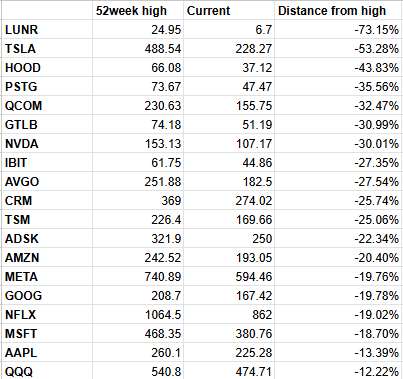The Wearable/Robot/Drone Revolution: Finding Secular Growth Investments
When you’re looking at long-term, revolutionary-type investments, you’re obviously trying to find markets and companies that are growing quickly with huge potential in front of them. There are two types of growth, secular and cyclical. Cyclical growth happens when a company and/or a market see upside along with the broader economic cycle. Energy companies, metals markets, chemicals, housing and many commodities fall into this type of category. That is, when times are good, so too will their businesses likely be good and when times are bad, all the boats sink together.
Secular growth, on the other hand, happens when a nascent industry is taking off, about to grow into revolutionary proportions as it displaces old business models and technologies. Two factors contribute to secularly growing industries — they create entirely new demand and they steal demand from other industries. Netflix, YouTube and other web/app video sites, for example, are contributing to more people consuming more video than ever before. But people are also spending some of the time that they used to spend watching network and cable television on Netflix and YouTube. That’s a double shot of growth for the web/app video industry.
Likewise, wearables, robots and drones are going to be secularly-growing, eventually reaching new revolutionary proportions, creating new end-markets, consumption habits and prosperity for our economy as well as our society at large.
How many wearable computing devices do you own right now? None, is the most likely answer. How many times a day do you interact with a drone right now? Unless you’re in Afganistan, Syria or somewhere like that being targeted by the RepublicanDemocrat Regime or a hobbyist with a quadcopter camera, your answer is most likely, never.
And robots? Factories are filled with robots, but our day to day consumer doesn’t interact with robots much just yet.
Meanwhile, over the next five to ten years, billions of new wearable gadgets in hundreds of new form factors with millions of new applications will be sold to consumers and enterprises around the world. Drones — from Google’s and other’s driverless cars to pilotless aircraft to quadcopter package delivery — will be everywhere in our daily lives within the next decade too. Facebook and Google will be using Drones to deliver Internet access. Robots, which, if they’re fully mobile, would also be known as drones, are going to sell us routine tickets, provide safety checks and who knows what else over the next decade.
The wearable/drone/robot revolutions get even better for investors who are willing to do their homework because each and every one of those wearables, drones and robots needs ever more computing power and sensors.
The first iteration of the iPhones and Android smartphones had about three sensors each, including accelerometer, proximity and light sensors. Today’s smartphones and tablets have ten to fifteen sensors each, including all those three already mentioned along with 3- or 6-axis gyroscopes, fingerprint, gesture and even heart-rate sensors.
Each wearable, drone and robot will likewise have ten times or more as many sensors as these early versions of wearables, drones and robots that we see coming out today.
So if you can find a market that will grow from almost nothing currently to selling billions of units a year in the next decade, you’re probably onto some good investments. But if you can find component plays in that industry that will sell ten or twenty or a hundred components into each one of those units, you’re probably onto the kind of investment that Intel was when PCs were nascent and before it went up 1000-fold from 1970s to the 1990s.
I’m building a portfolio of these kinds of stocks right now, knowing that I’m probably still a year or two ahead of the demand curve that’s building for these companies right now. So far I’ve started with toe-hold positions in Invensense and JDSU, both of which have got sensor/component products that should do well in these new industries over the next five to ten years. I’m still researching all of this and trying to put it into something we can analyze, quantify and grasp. Stay tuned and if you’re got some plays on these revolutionary trends, let me know.




